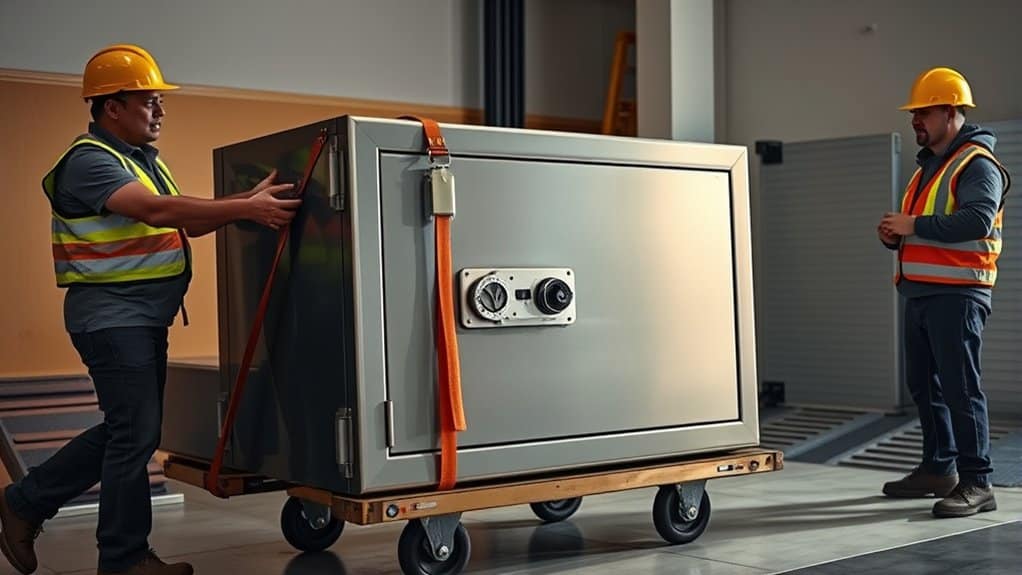About Chandeliers
Of all lighting fixtures, none create an atmosphere of class, grace, and elegance quite like a chandelier. Chandeliers are the ultimate in ornamental lighting, with sprawling branched supports for multiple lights and designed to be hung from the ceiling. Originally designed as candelabras, to hold candles, more modern chandeliers obviously make use of electronic lighting with incandescent bulbs as well as fluorescent lamps as well as LEDS.
Chandeliers are made from a variety of materials including brass, silver, gold, and most commonly, glass. Classic design chandeliers utilize hanging crystal prisms from which to illuminate a room utilizing refracted light. Smaller chandeliers may be used in bedrooms or living spaces, while larger variations are commonly installed in the grand rooms for theatre lobbies, houses of worship or even business establishments looking to convey a touch of elegance.

Utilizing chandelier lighting adds sophistication and classical ambience to any space, but such luxuries are not inexpensive and moving them from one location to another can be a risky endeavor indeed. Once you have invested in a chandelier, you will no doubt want it to be properly maintained so that it may be handed over to future generations.
Moving a Chandelier
We understand the importance of moving a chandelier safely and securely, so here are a few tools of the trade designed to make sure your chandelier(s) arrive safely at their new location.
Proper Prep
As with any moving project, proper preparation prevents inferior performance. Preparing your chandelier for its move consists of three straightforward steps.
- Power down the chandelier. While this should go without saying, you would be surprised at just how often such a simple and obvious step gets overlooked. You need to make sure that the power to the chandelier is turned off before you make any attempt at disconnecting or dismantling the unit. Because chandeliers are so often wired in like much of the rest of your home’s lighting, you should consult an electrician to come out and make sure that the power current has in fact been cut off. The last thing you or your family or friends need is a nasty electrical shock.
- Remove anything removable. Chandeliers are rarely one-piece affairs, but rather a collection of smaller pieces working together. These include all the bulbs, crystals, shades, and any and all other adornments that make up the unit. If it is possible to secure these pieces to the chandelier close to the area where they belong, utilize wrap, tape, or foam to do exactly that. If you cannot do so, have a box designated for them, one that is clearly marked for future reference. You may also want to video record the partial disassembly of the chandelier so that you have a reference point when it comes time for reassembly. Keep in mind what you are working with, and you do not want to take shortcuts, because that increases the likelihood that something eventually gets broken.
- Bag and box. Keep careful track of all bolts, screws, chains, wires, and any other extraneous components that you remove from your chandelier. These items should similarly be placed in a bag or box, clearly labeled. If there are hanging parts that simply cannot be removed, that are not designed to be separated from the chandelier, use zip ties to securely fasten them down for transport.
The Main Thing
As for the main body of the chandelier itself, it is important to securely wrap each and every connected piece. This will make sure that they do not knock against each other during the move. Use high quality wrap for this part of the process and wrap each section one at a time. This means every arm, every scroll, every crystal, etc…all should be entirely covered in paper or wrap and fastened down to the chandelier body using packing tape. It will be a slow and tedious process but trust us it will be worth it.
Once the body of the chandelier has been secured in a layer or two of bubble wrap, it should be placed in a large garbage bag filled with Styrofoam peanuts for an added layer of protection.
Proper Containment
At this point, the chandelier will need to be placed in a secure container, ideally a wooden crate with a clearance of at least four inches on each side. Those four inches allow for the installation of cushioning materials. The container you choose should be sturdy and durable, and preferably with an interior lining to prevent the chandelier from moving while traveling and in the event of sudden stops or lane changes, all of which have the ability to shift anything being transported. You can use additional bubble wrap or even moving cloths to soften the sides of the box.
Now for the pieces, they need to be boxed up separately and similarly protected. So much of a chandelier’s construction is fairly fragile, so you want to take the time to make sure each element is properly cared for and stowed securely. Smaller pieces can be bagged and placed in the same container as the chandelier, but if shared boxing is not an option, simply make sure the pieces are labeled, and you know where they are supposed to go when all is said and done.

We have touched on this already, but make sure all containers are properly labeled, not only with what room that are to go to but also what is inside, as doing so helps you more efficiently organize the unloading and unpacking that will happen at your destination. Make liberal use of the phrases “Fragile” and “This Side Up,” because if something can be damaged, it will.
The Day of The Move
When it comes to actual transport, make sure you have at least a couple of helping hands to collaborate with you on actually maneuvering the chandelier from your home to the transport vehicle, ideally using a dolly or hand truck to take most of the weight. Make sure the container is securely fastened down using ratchet straps. Along the way, stop and check that your chandelier, among the other items in transport, has remained secure and not come loose while on the road. Once you are at the other end of your journey, again secure the help of friends to move the chandelier into your new home and install it correctly. It is always advisable to take videos or pictures of the process to aid in the reassembly later on.
Done correctly and in order, your chandelier will be able to bring light and joy to your home and family for many years to come.









